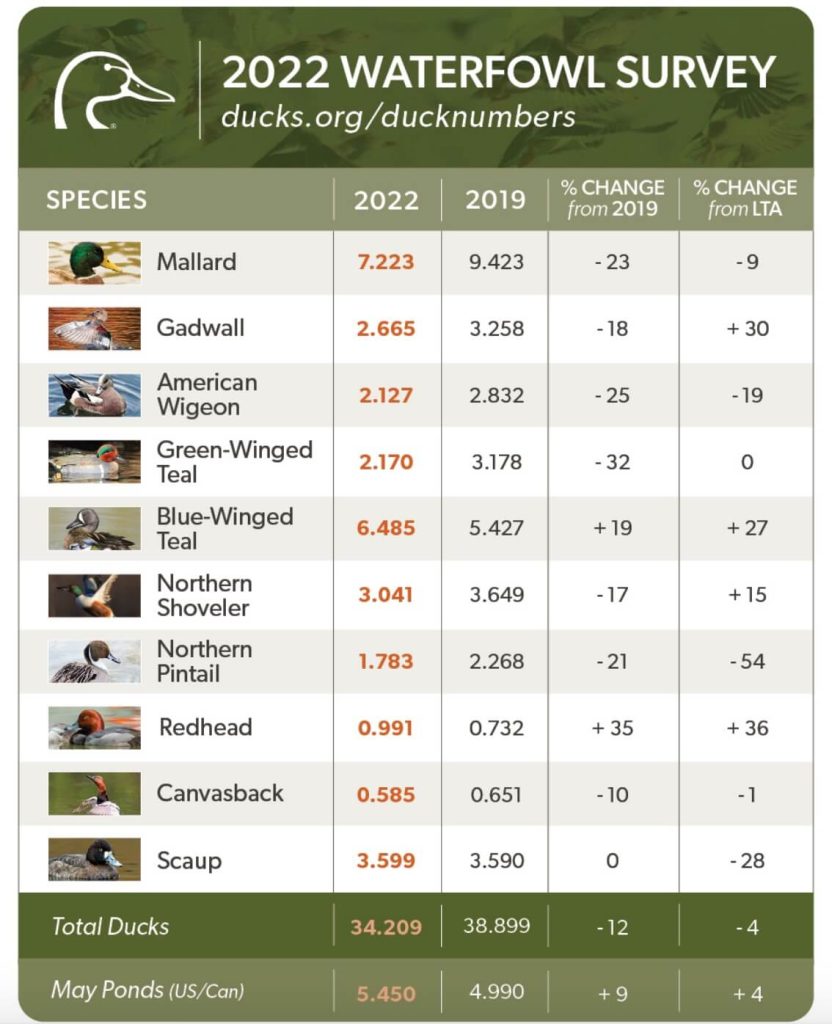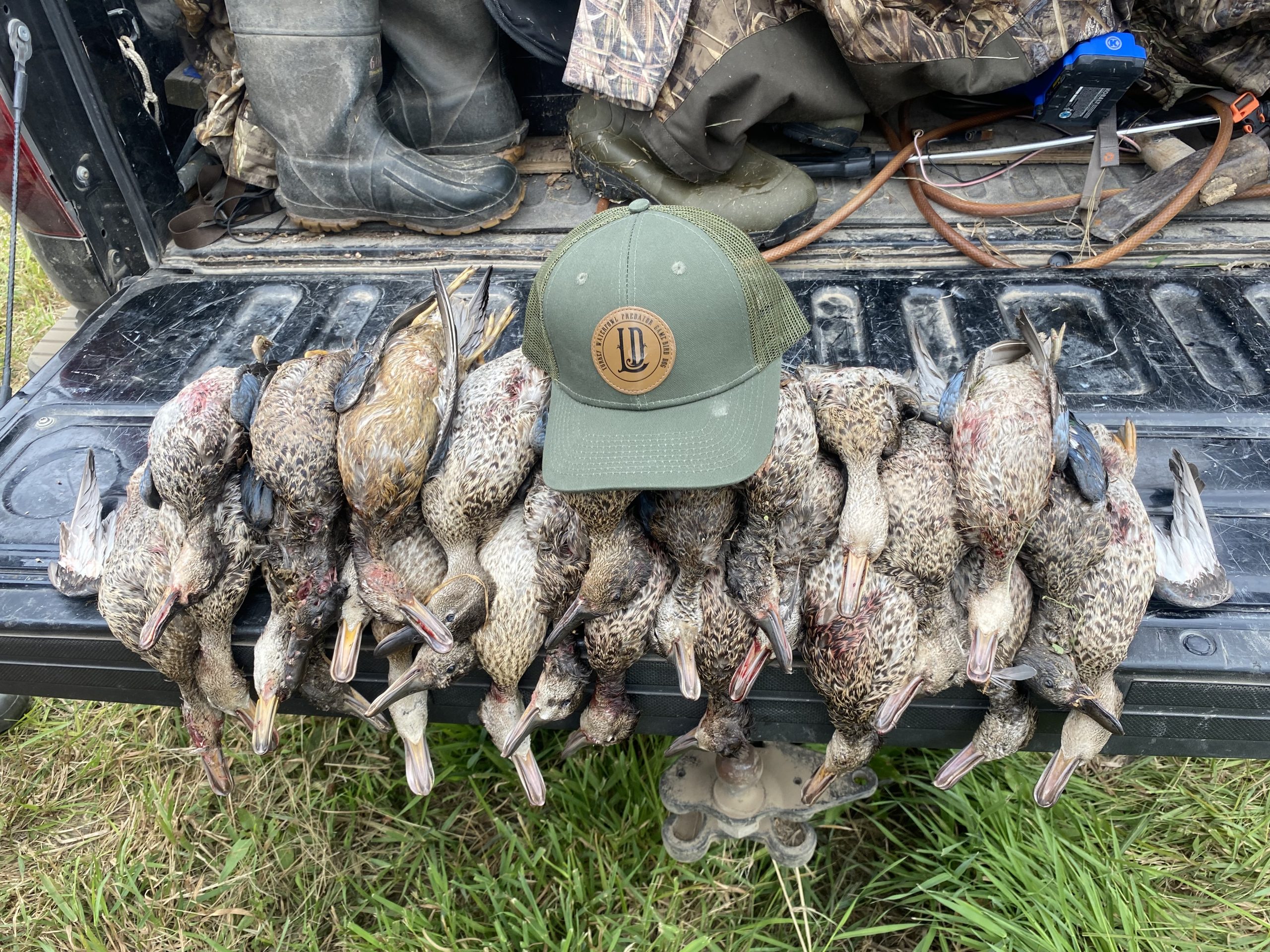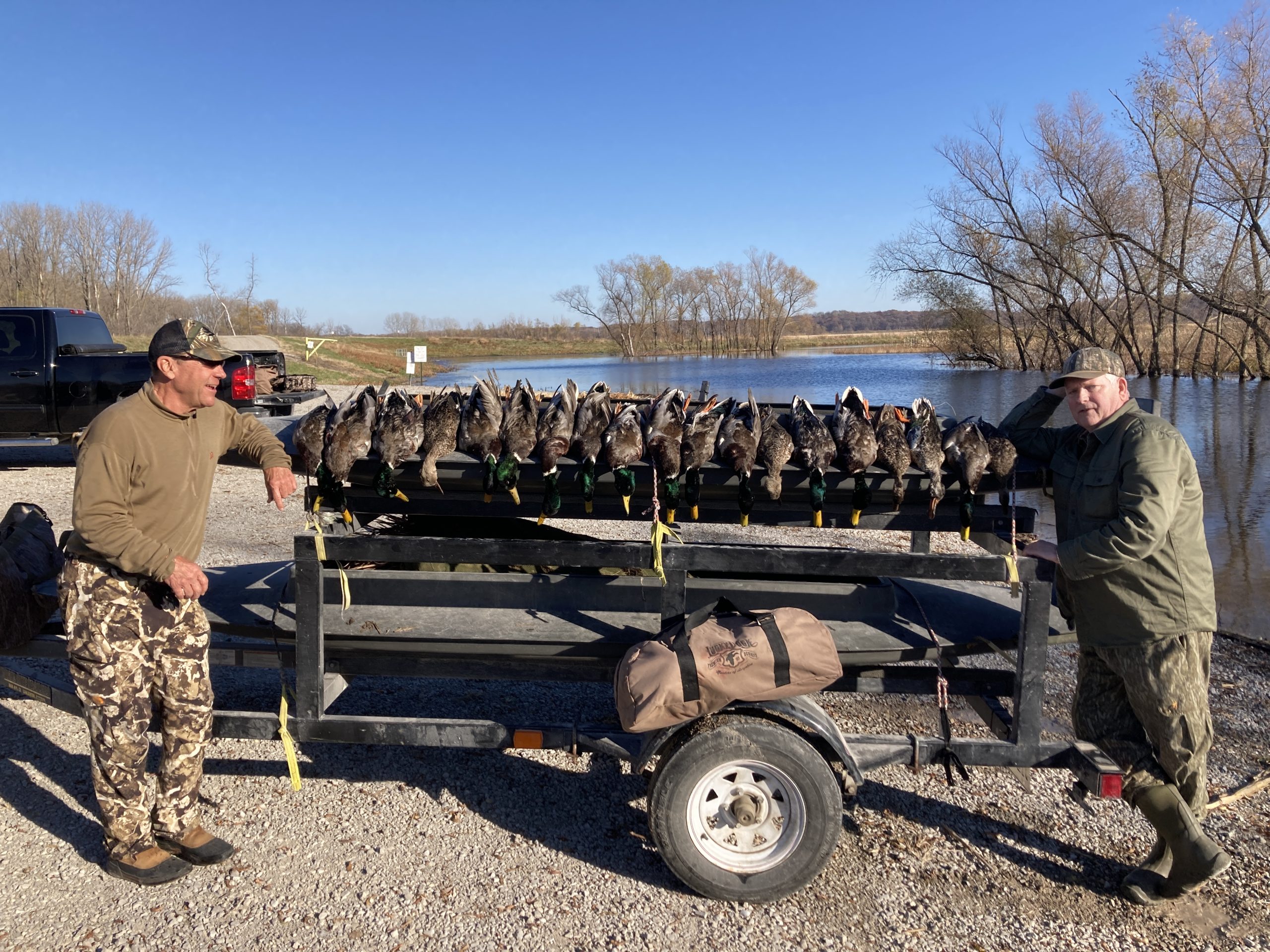
By now, most have received and taken a look at the annual duck census, conducted by the United States Fish and Wildlife Service, The Canadian Wildlife Service, and recently reported by Ducks Unlimited. A couple of years were skipped during the pandemic, but we now have a look at what duck numbers were during the 2022 breeding season. Beginning in 1935, with what at the time was the first waterfowl census, the International Wild Duck Census began to take a look at the population with an eye on doing all that could be done to save the ducks and avoid a cessation of duck hunting altogether. The breeding population and habitat survey, standardized since the mid-‘50s, provides a long-term index to breeding duck numbers and habitat.
We as duck hunters should have a good understanding of the prairie pothole region of North America because this is prime duck habitat for nesting and reproduction. Early surveys, started on the ground by using volunteers to count in each region. That first survey reported a total of 65 million ducks on the continent. What resulted from those early efforts was a need to protect that pothole region and begin acquiring and establishing new wetlands in Canada and the United States.
Let’s take a look at the current data. Our current continental breeding population was estimated at 34.2 million breeding ducks down 12% from the last survey in 2019. While that might seem steep, keep in mind that compared to 1955 the drop is only 5%. And estimates have ranged from a low in the early 1960s of 25 million to a peak of nearly 50 million within the last decade. We have all said this before “duck hunters are in this for the long haul.” It is not a passion that enjoys a year-after-year-after-year success rate or a day-after-day-after-day success rate, but rather some good hunts and some bad hunts over the years.

The report we all see is not something that comes without a great deal of effort and research. The survey encompasses over 2 million square miles of ground in North America and requires transects by foot, auto, helicopter, and airplane. It is indeed a huge effort to make this count. This year, several factors influenced a lower count including drought across southern Alberta and Saskatchewan, below average precipitation that persisted into fall, and colder winter temperatures. By spring in the region, a drought continued until May when significant precipitation occurred, and in some areas too much rain while it stayed very dry in others. This spring rain is also monitored and reflected in the May Ponds number provided in the survey. For this year, that number was 5.45 million ponds up slightly from 2019. Overall since about 2015, these ponds have suffered from drought. In concert with this decline in ponds has been a decline in the Mallard, Gadwall, Blue and Green Winged Teal, Shovelers, and Pintail among a few of the species surveyed. Finally, dates in the report reveal the decline in Mallards since 2015.

I spoke with Dale Humburg, retired DU Chief Scientist and his comments provide some great insight. Dale provides,
“You probably should think about waterfowl, habitat conditions, and hunting opportunities for the long haul. Data provides us a long-term look at May ponds and breeding populations. We saw favorable habitat and high populations in the late ‘50s, during the ‘70s, and again throughout much of the last 2 decades. Our recent situation with drought in much of the prairies has been repeated a number of times over the last 60+ years. Duck production is not good in dry habitat conditions. This reflects the dynamic nature of ponds in the US and Canada that produce ducks. Two things are required in the spring and summer: favorable water in wetlands and upland habitat for nesting conditions. When wetlands are dry they are not available for breeding ducks.
“What we have seen during years of habitat and duck decline; those of us with an eye on the long term have likely observed by. These declines mentioned above may be unfavorable in the short term but are typical of the “boom and bust” nature of duck habitat and duck production. It is tempting to focus on a single year, but that does not acknowledge the long-term dynamics of the prairies.
“But we should not ignore the long-term challenges that face waterfowl enthusiasts. Those who care about waterfowl are concerned about wetland loss and upland habitat critical for nesting ducks. By purchasing Federal duck stamps, waterfowl and wetland supporters demonstrate a tangible and effective contribution to long-term conservation. A number of collaborative efforts between the US and Canada along with state agencies, private citizens, and national organizations have had a great impact on waterfowl as well.
“If we look back to historic times we are reminded of how important our conservation efforts have been and how they contribute to waterfowl and wetlands. Changes in habitat and duck populations prompted past conservation initiatives. So these periodic reminders tell us that the challenges to wetlands and waterfowl remain. Our conservation job is not done!
“Keep in mind though, the forecast of an overall lower duck population may not be indicative of your waterfowl season. The question is what does your habitat look like? Will the weather be timely? Are the ducks migrating on the day I choose to hunt? There are a lot more variables affecting the duck season than a predicted fall flight.”

As I mentioned and Dale reinforced this is a snapshot of the current population and habitat outlook. It will undoubtedly change over time, and we have to hope that improvement will continue to occur with the input provided by resource managers. There are so many variables under Mother Nature’s control. So don’t be disappointed, don’t change your plans for hunting, and let’s see how 2022-23 turns out.
Provided here are links to both the USFWS Report and the Adaptive Harvest Management Report for 2022
***Buy and Sell on GunsAmerica! All Local Sales are FREE!***
